Counterstrain: First Osteopathic Technique Explained on Steem
Counterstrain Technique
Often when thinking about manipulation, people assume you are “cracking” and “popping” the back or neck. While this does occur in some osteopathic techniques, that is far from the majority of them!
Many are very light techniques that can be extremely beneficial. I love this technique and use it a lot…I even used this technique a few times this week in the clinical setting! In all cases this week, I was able to relax some very tight muscles. This is a newer technique in the osteopathic profession. New enough that many osteopathic physicians are not accustom to using it.
Before going into this technique I want to steer Steemians to prior posts on osteopathic medicine. When people hear about manipulation, they often shut their mind off and form preconceived ideas.
To summarize briefly, this is just one tool osteopathic physicians have in their pocket to treat pain or other dysfunctions in their patients. Osteopathic physicians are different from chiropractors because they are fully licensed medical doctors in the US. Some osteopathic physicians become neuro surgeons, cardiologists, dermatologists, and so on and never use these talents that they learned in school. With this degree I have no limitations and can prescribe any darn medication or perform any surgery I want. Some don’t use manipulation because it does not fit in well with the field they choose to go into. As osteopathic physicians, we have equal rights to MDs because we learn the same material in school and train with them in our post-graduate specialities.
However, I am now applying into the specialty of family medicine where I believe manipulation will have a great place. Not only can I diagnose/treat/medicate any disease I feel comfortable fully managing, but I can use manipulation so that people can have cheaper, less invasive (less surgery), less opiates (addiction is rampant in modern society), and so on. I plan to write a post in the future of how I envision osteopathic manipulative medicine/treatment (OMM/OMT) to be a great reducer in the use/prescribing of addictive pain medication.
To see my two previous osteopathic posts see below:
A Snap Shot of Osteopathic Medicine
Counterstrain- History
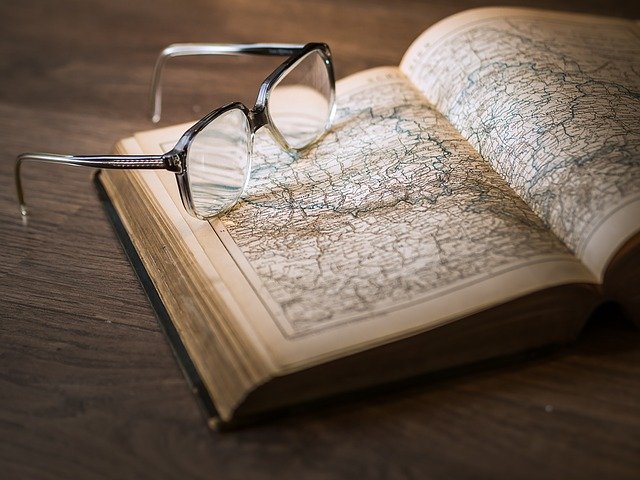
In a previous post, I stated that counterstain was discovered in the 1980s. I was wrong! It actually was discovered in 1955 by Dr. Lawrence Jones. However, it was not utilized in osteopathic schools until later. The discovery— like many before it— was actually by accident!
Dr. Jones had an athletic patient who had, overtime, formed lots of tension in the psoas muscle…so bad that he could not stand straight. Dr. Jones tried multiple osteopathic techniques that did not make the patient’s condition much better. Dr. Jones had to see another patient and told the young athlete to lay in the most comfortable position until he could return. When the doctor arrived back and brought the patient to his feet, they were both surprised— the pain was gone!
Overtime, Jones developed a technique called counterstain that could be done in 90 seconds with similar results!
Too good to be true? Well, read some more and then make an opinion.
In this post, I will describe the technique, the physiologic theory on why it works, and research that demonstrates its effectiveness. LET’S GO!
Counterstrain- The Technique
1) First you find a tender point in a muscle
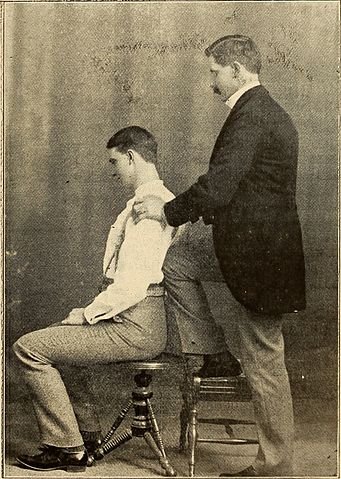
This is pretty self-explanatory. You push on a tight muscle that is hurting the patient. Often a specific point of tenderness will be felt by the patient and felt by the doctor. I compare this to what a massage therapist would call a “knot.” Often I feel a “bump” on the muscle, and when I press down on it, the patient feels pain. However, this is not necessary. If a muscle is “tight,” and the patient is complaining of pain , this is enough to diagnose the area of somatic dysfunction.
When the patient feels this pain when the osteopathic physician is pressing, he or she calls it a "10 pain.” It doesn’t matter what the real pain scale is because the physician is looking for the percent improvement in the pain once the technique beings and ends.
2) Keep your finger on the point
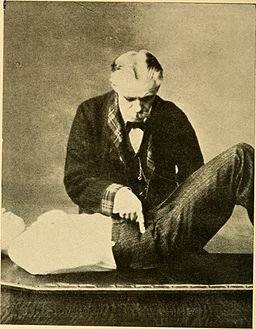
This is very important! Now, you don’t want to keep applying a lot of pressure because that causes the patient a lot of pain…save the pain just for the diagnosis…this is a gentle technique. It is important to keep your finger on the point because you want to keep reevaluating the point for an increase/decrease in the amount of pain. In addition, at the end of the technique, it will bring validity to the technique because the patient will have physical evidence that that area has decreased in pain and that the area is not as “tight” anymore.
3) Move the body and appendages to a position of more comfort for the patient.
For example, if there is a tight area in posterior part of the left neck region (the top of the trapezius muscle), I might ipsilaterally sideband the neck and ipsilaterally abduct the left arm. What does this do? It shortens the trapezius muscle on the left side making it feel better for the patient because the tight muscle is stretched less.
IMPORTANT: The doctor moves the patient’s body with no assistance from the patient. This is very important and is called “passive motion.” If the patient was assisting in the movement it would be “active motion.” If the patients were helping, they would activate muscles (use force) within the muscle.
Although the muscle would still be shortening, it would be contracting at the same time (the muscle would be using ATP to contract, and the micro-tears within the muscle would cause more pain to the patient). However, if the patient is relaxed and allows the doctor to approximate the muscle, no ATP is being used up and the muscle is not contracting, only getting passively shorter.
For example, if you were to take a rubber band and passively bring it together, it would become less tight. If you then stretched it, the fibers of that rubber band would become tight and have potential energy. If you then released that rubber band the fibers of it would be actively contracting due to the prior potential energy from stretching it.
The passive motion does not possess internal energy, and is like approximating a rubber band without stretching it….hope that makes sense...
4) Reevaluate the tender point (remember your finger during all this movement is still on the tender area….the physician will not take his finger off because then all objectiveness and re-evaluating is futile (although the physician may still benefit the patient).
During passive motion, press again on the tender area and see if the pain has changed. The technique is effective if you can get the tender area to decrease from a “10 pain to a 3 pain”….in other words at least a 70% improvement from baseline.
5) Once the pain is improved at the tender point by 70-100% hold the patient in that position for at least 90 seconds.
Why 90 seconds?…typically it takes that long for the patient to actually relax. Although this is passive motion, the patient subconsciously is still activating muscles. In 90 seconds, typically the patient will truly relax.
6) Without the patients help, passively move the patient back to the original position where you found the tender point
REMEMBER, still keep your finger on the tender point!
7) REEVALUATE the tender point from the starting position and see if the pain has been reduced by at least 70%
PRETTY AWESOME (I know…)
The Scientific Theory of Why/How This Works
There are many theories on why/how this works, but I will point out two.
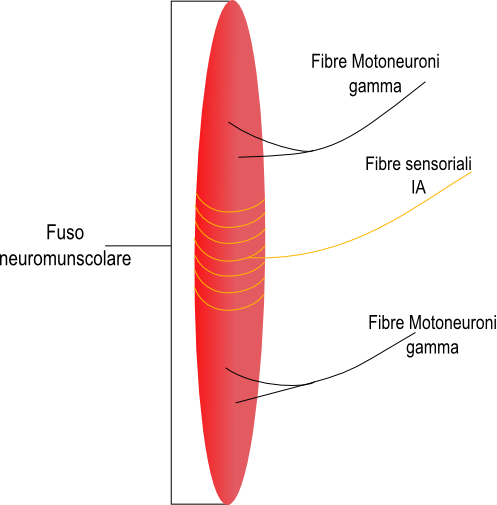
1) Aberrant Neuromuscular Activity
This involves muscle spindle fibers that are found on muscles. When stretched, these muscle spindles fire neural signals to the spinal cord which then cause a reflexive response. One is to contract the muscle that is being stretched (to prevent further stretching), and the other is to relax the antagonist muscle to shorten the stretched muscle further.
Link to information on muscle spindle fibers
Therefore, in counterstrain you are approximating these spindle fibers more (shortening versus lengthening) which does not cause the “tightening” of that muscle. You are also stretching the antagonist muscle more which will cause reflexive relaxation of the muscle trying to be fixed.
This is also why the patient should not be actively involved in this technique because they will “throw off” this reflective response you are trying to regulate. It is also important not to stretch the antagonist muscle too much while shortening the other or you could cause a problem on the other side. (This is probably why most osteopathic techniques should not be tried at home and should be handled by professionals in the field!)
The contraindications are relatively low in this procedure because you are actually relaxing the muscle by gently putting it in an area of less pain. One contraindication would obviously be if the patient didn't want it done.
2) Local Circulation and Inflammatory Reactions
This journal article gives multiple research studies on this theory. In my opinion, it is a combination of both of these theories that contributes to the muscle relaxation. However, more support (newer support) is for this second one.
In 1990, a study was conducted that supported that shortening the muscles in counterstain increased circulation to that muscle. More blood flow would cause an increase in metabolic waste removal and increase the nutrient supply to the muscle being treated. This would decrease the inflammation (Jacobson et all from link in the paragraph above).
A 2007 study (Metzler and Stanley) also showed that stretched muscle release more pro-inflammatory cytokines and interleukins. Therefore, decreasing the stretch would have less pro-inflammatory mediators.
I believe that the first tested theory, explains why there is muscle relaxation in a very quick amount of time. In addition, the second theory that has been tested by multiple studies also could explain how there can be longer lasting effects of this treatment.
BOTTOM LINE: Muscle spindle activity is believed to be “manipulated” in counterstain to reflexively shorten the muscle being treated. In addition, shortening this muscle will increase blood flow and decrease pro-inflammatory mediators in the surrounding areas.
Clinical Evidence of Counterstains Effectiveness
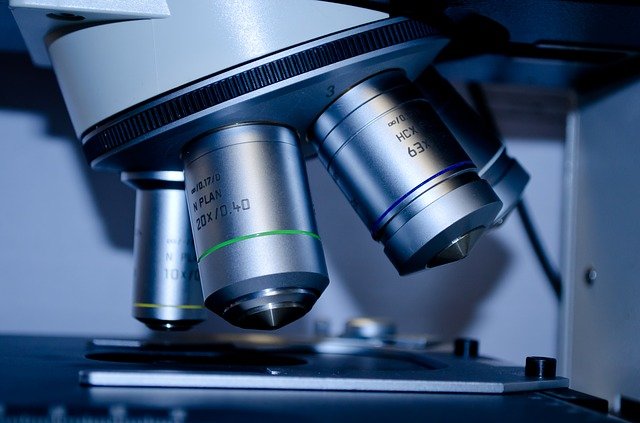
Before going into studies, I would like to make the point that the technique of counterstain by itself is an objective measure. If you are pressing on a tender/tight area (and keep your finger on the same point throughout the technique) and then after the procedure, the same area is less tender/softer, that is evidence that the technique is effective by itself!
Randomized control study (Journal of Sports and Physical Education) finding statistical significance (P value <.005) for using counterstain on the QL muscle of the lower back
A small study in 2000 showed long term improvement with using counterstrain in chronic pain patients. The vast majority showed 50-100% improvement immediately after treatment. Six months after techniques were performed, 40-50% still had improved daily function.
A study of 71 people with masseter dysfunction showed statistically significant changes in ROM and pain reduction after the use of counterstain
A systematic review of 5 counterstrain studies supported the conclusion that counterstain was effective in decreasing tender point pain in muscle groups
*It is important to note that more research should be done on the area of counterstrain! However, the straight-forward objective findings after these techniques are performed would strongly support its clinical effectiveness. These studies add validity to my beliefs and personal objective conclusions. I would like to see more long term studies to its effectiveness....but in weeks to months I have personally seen the benefit of this treatment!
Thanks for reading, and I hope this filled your mind with some practical biomechanical knowledge.
Follow and stay tuned for more health/osteopathic articles!

Me!
Sources:
-All links provided contain the sources used
-All photos from wiki commons/pixababy.com and no sources are needed. However, a link to each photo is found in the links above.
*These photos above do not represent the technique specific to counterstrain. I could not find free copyright images of this procedure. Most of these photos are from the early 20th Century. Counterstrain was discovered in the 1950s. However the photos below represent features that resemble steps you would use in counterstrain. These photos are mostly to help you enjoy osteopathic medicine and the neat elements to many techniques. From a picture, it is also hard to know exactly what techniques are being used because you are not seeing the active process or which is the way of the restriction. I hope to make videos soon to demonstrate these techniques.
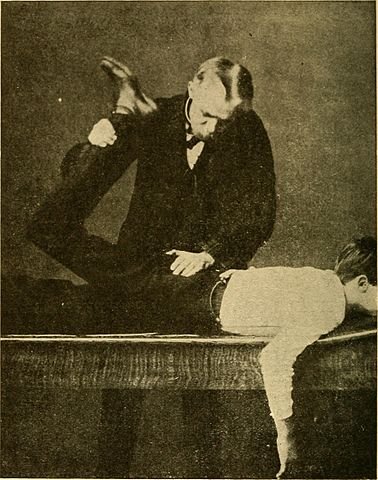
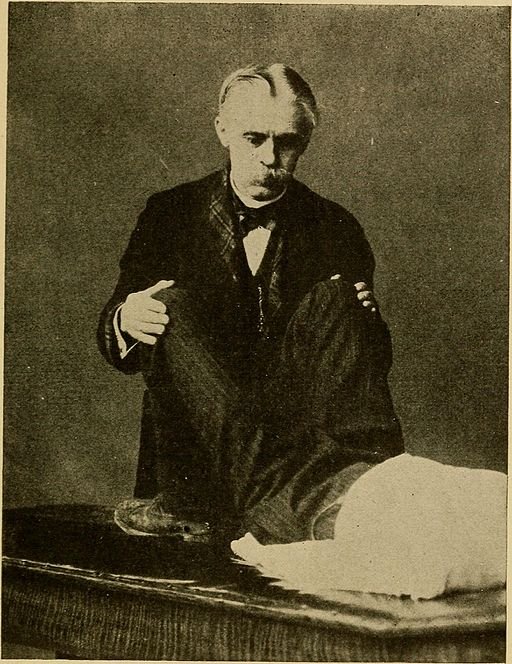
This sounds similar to orthobionomy - though in that I don't think they hold the tender point at the same time
Bexause so many different techniques have stemmed from American osteopathic manipulation, it is hard to keep track of them all. It appears Arthur Pauls made this technique you are describing. Paul's was an a osteopath (which is a group in Europe that stemmed from osteopathic philosophy in Europe). Unlike osteopathic physicians they are not fully trained medical physicians. Counterstrain was discovered over 10 years before this guy talked about his specific approach. I would argue that holding the point the entire time is an important object way to check for improvement. I really have no idea why this guy made a completely different technique...it sounds like he thought his method had longer lasting effects but from the studies I mention there are studies that would say otherwise. However , if this guy has improved the lives of his patient that is the important thing!
Thanks for the clarification that a lot of osteopaths are not osteopathic physicians, I wondered about that. I suspect the technique was developed that way so that it could be learnt by people who are not physicians.